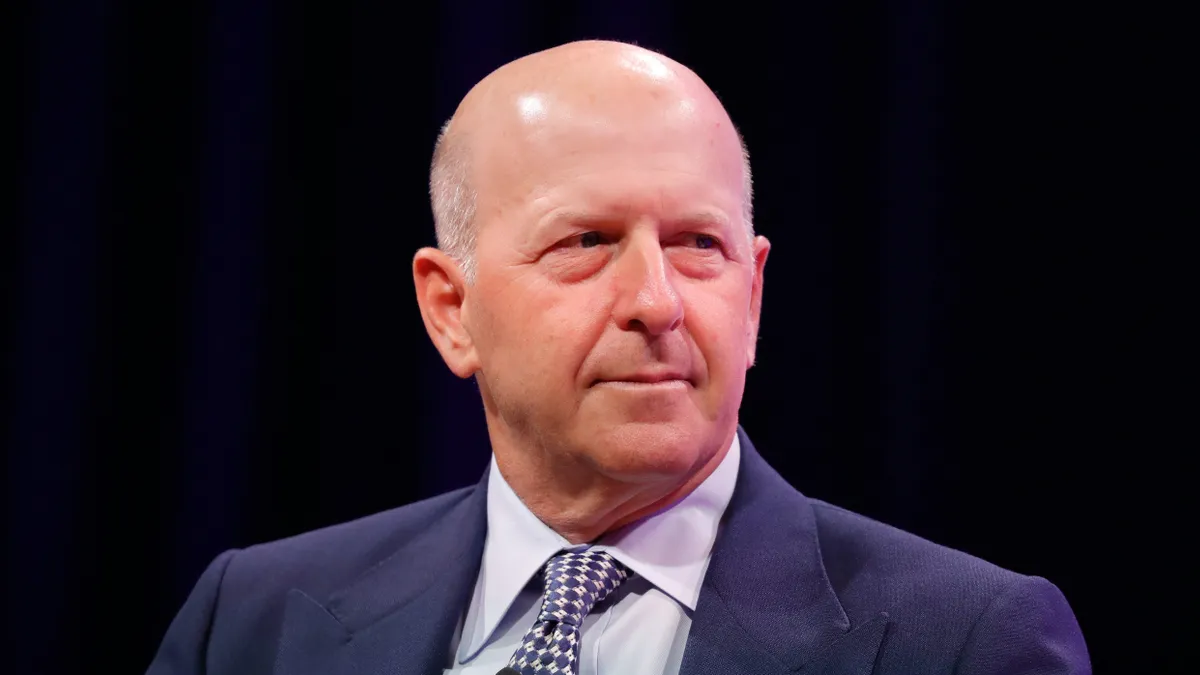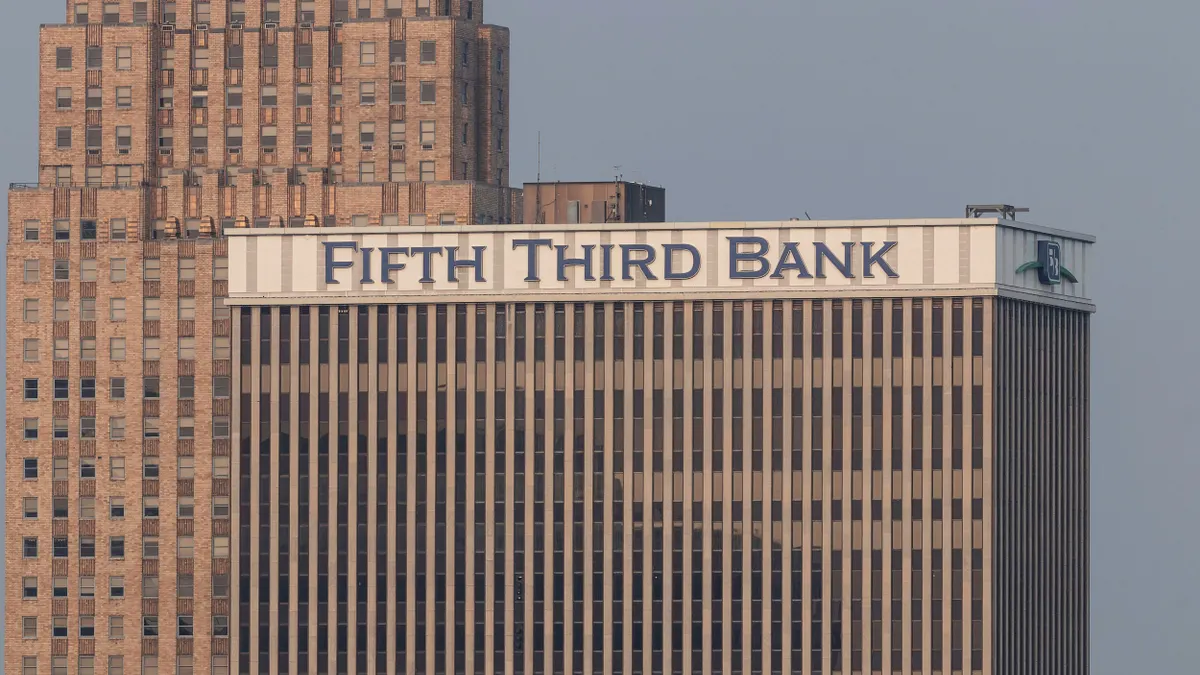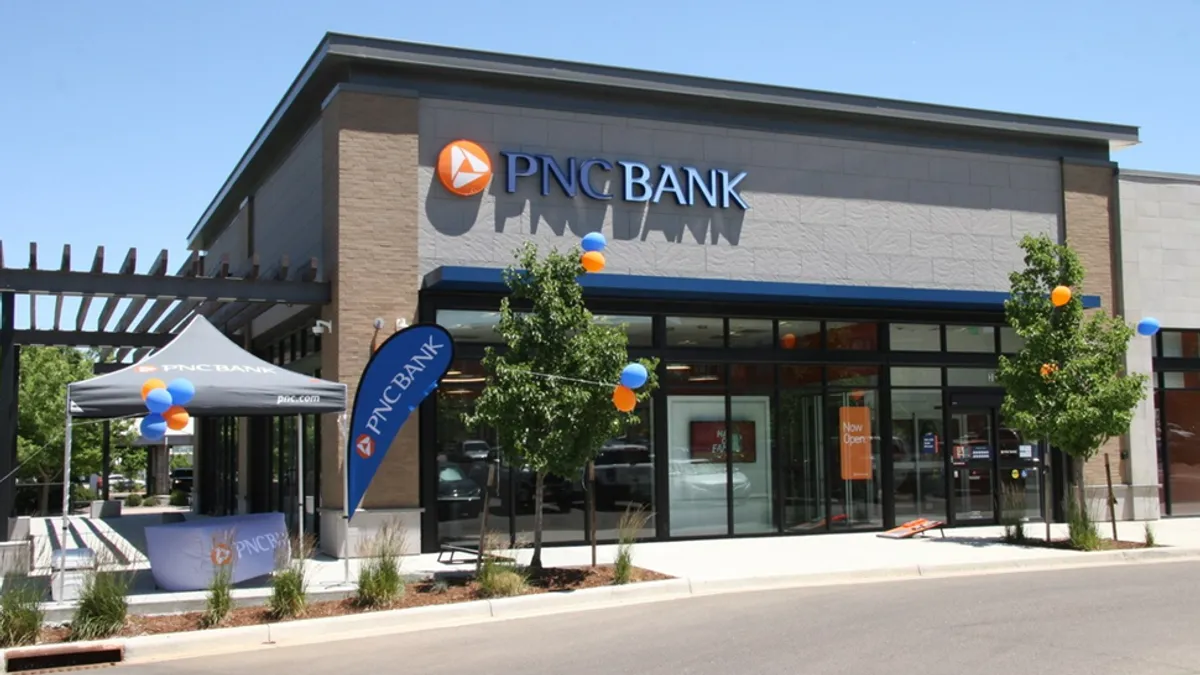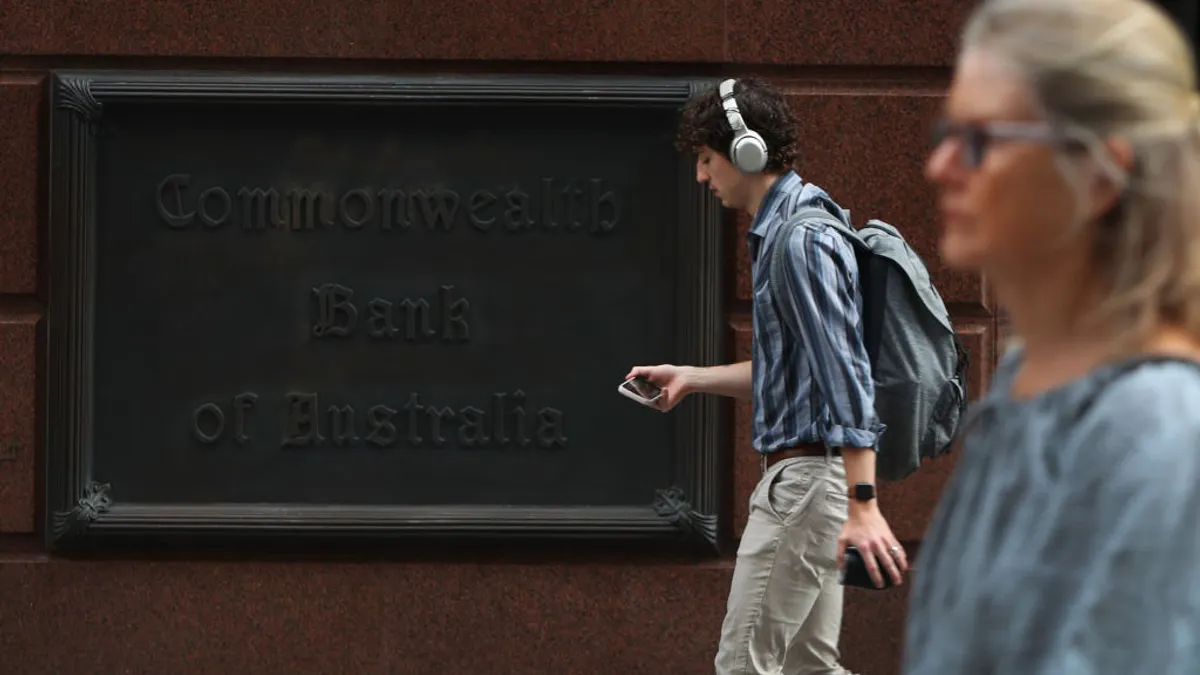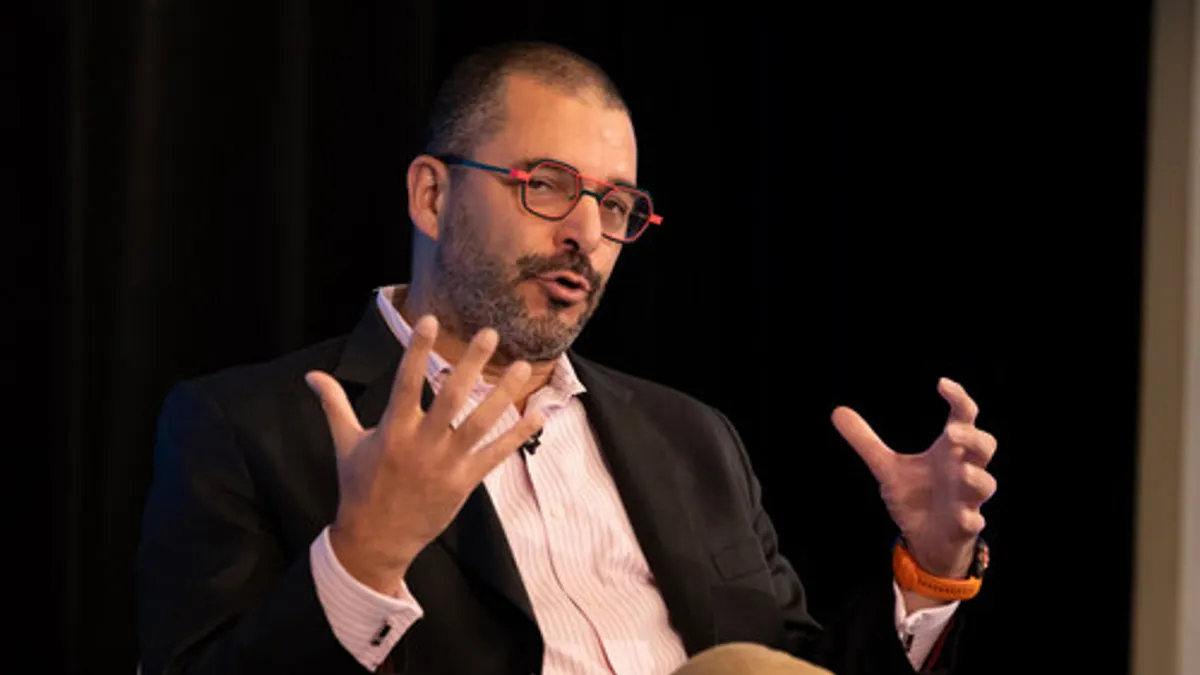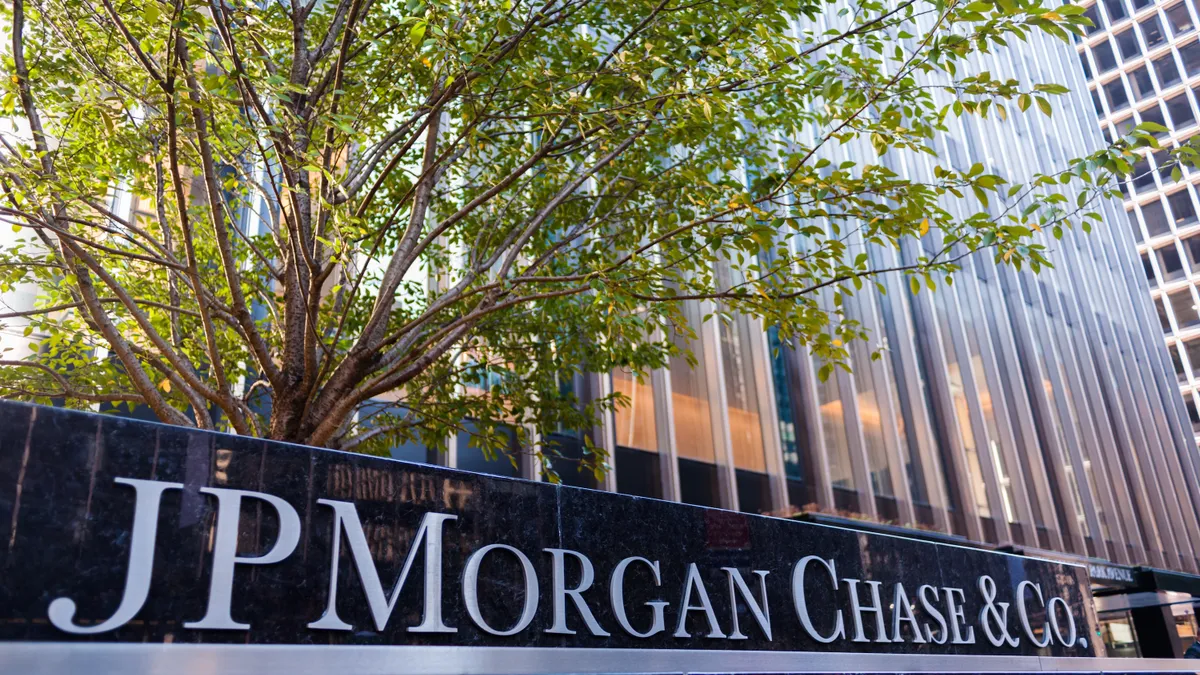The advent of artificial intelligence sure sounds different depending on the intended audience.
Goldman Sachs, in its third-quarter earnings report Tuesday, chose to highlight AI in its quote from CEO David Solomon.
“Longer term, we are prioritizing the need to operate more efficiently to seamlessly deliver the firm to our clients helped by new AI technologies,” Solomon said in a statement.
Pause.
To its investors, Goldman asserts AI is a help.
The bank’s earnings otherwise didn’t dwell on new technology. Goldman reported a 37% year-over-year jump in net income, to $4.1 billion. The bank saw a 20% increase in revenue, to $15.18 billion. And investment-banking fees skyrocketed 42% to $2.66 billion for the quarter ending Sept. 30.
Point the messaging inward, though, and AI can sound like something else. Goldman announced its “OneGS 3.0” strategy in a memo to staff Tuesday – which may sound innocuous enough, on its face. But Solomon, along with Goldman President John Waldron and CFO Denis Coleman, highlighted AI, saying its “rapidly accelerating advancements … can unlock significant productivity gains for us.”
“While we are still in the early innings in terms of assessing where AI solutions can best be deployed, it’s become increasingly clear that our operational efficiency goals need to reflect the gains that will come from these transformational technologies,” the executives wrote in the memo, seen by Bloomberg, Reuters and the New York Post.
Dovetailing with Solomon’s earnings comment Tuesday about AI in the “longer term,” the Goldman execs stressed that AI implementation in client onboarding, lending processes, vendor management and regulatory reporting would be a “multiyear effort.”
But employees can expect job cuts this year in roles across the company, in line with AI opportunities. Goldman pegged the number of reductions as “limited.” However, the bank said it would “constrain headcount growth through the end of the year.”
“Even when the business is performing well, we have an obligation to review our operations carefully and position the firm for the future,” Goldman executives wrote. “We don’t take these decisions lightly, but this process is part of the long-term dynamism our shareholders, clients, and people expect of Goldman Sachs.”
Pause.
There will be AI-connected layoffs because shareholders and the market at large expect Goldman to optimize, the bosses are saying.
Jennifer Zuccarelli, a Goldman spokesperson, noted that the bank expects to finish 2025 with an increase in headcount over last year. Goldman counted about 48,300 employees as of Sept. 30. That’s roughly a 1,800-person increase from Dec. 31.
The bank reportedly pushed up its annual cull of 3% to 5% of its workforce to May this year, from the usual September – with special attention put toward vice presidents.
Goldman executives on Tuesday, however, painted with a broader brush.
“To fully benefit from the promise of AI, we need greater speed and agility in all facets of our operations,” the executives wrote. “This doesn’t just mean retooling our platforms.
“It means taking a front-to-back view of how we organize our people, make decisions, and think about productivity and efficiency,” they added. “The firm has always been successful by not just adapting to change but anticipating and embracing it.”
Even Goldman’s biggest deal of the year so far – a $965 million acquisition of venture-capital platform Industry Ventures, announced Monday – sports a tinge of AI opportunity.
“We believe the venture capital market is at a pivotal inflection point as technology and artificial intelligence reshape the world,” Hans Swildens, CEO of Industry Ventures, said in an announcement of the deal. “By combining the global resources of Goldman Sachs with the venture capital expertise of Industry Ventures, we are uniquely positioned to serve the increasingly complex needs of entrepreneurs, private technology companies, limited partners, and venture fund managers – while fueling the continued growth of this critical economic engine.”
Industry Ventures manages $7 billion in assets under supervision and will fit in Goldman’s External Investing Group when the transaction closes in the first quarter of 2026, the bank said.
The addition is set to diversify Goldman’s $540 billion alternatives investment platform, offering secondary liquidity, seeding emerging venture capital funds, co-investing directly in early-stage high growth businesses, and investing at the intersection of venture capital and tech buyout, the bank said.
This will give Goldman new solutions “as companies stay private longer and investors seek new forms of liquidity,” Solomon said.
“Industry Ventures’ trusted relationships and venture capital expertise complement our existing investing franchises and expand opportunities for clients to access the fastest-growing companies and sectors in the world,” he said.
All 45 of Industry Ventures’ employees are expected to join Goldman Sachs. Swildens and two of the firm’s senior managing directors will be named partners within Goldman’s asset-management arm, the bank said.
The transaction will consist of $665 million in cash and equity, due at closing, plus a consideration of up to $300 million contingent on Industry Ventures’ performance through 2030, Goldman said.


